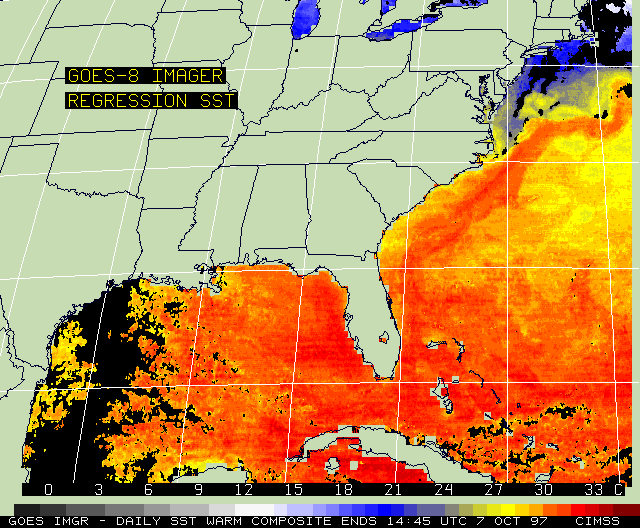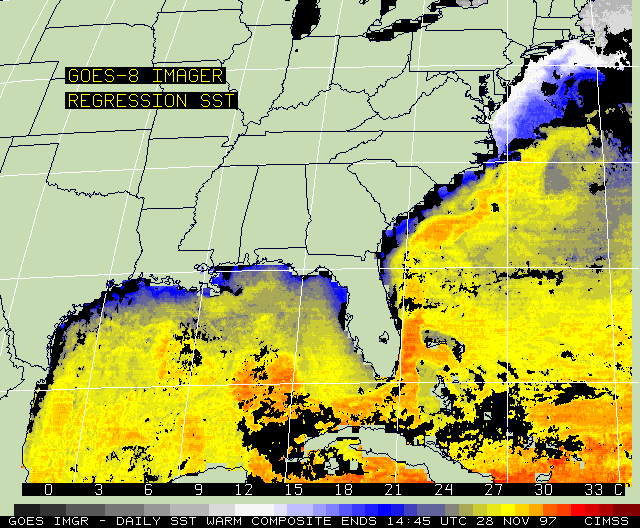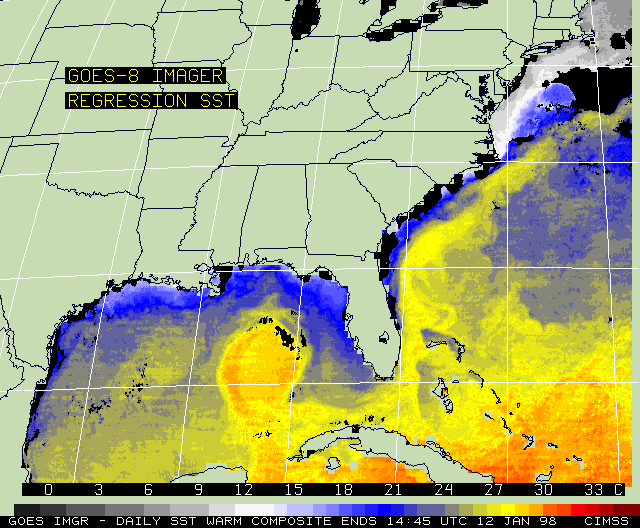Seasonal Changes in GOES-8 Imager-Derived Sea Surface Temperature
October 1997, November 1997, January 1998

|

|

|

|

|

|
The typical seasonal change that occurs in the sea surface temperature (SST) fields may be seen by viewing daily GOES-8 imager-derived SST composite image samples from 07 October 1997, 28 November 1997, and 12 January 1998. In October, warm waters (about 30 C) dominated the Gulf of Mexico and the region surrounding the West Indies; the Gulf Stream meandered past the coast of the Carolinas and extended out into the Atlantic Ocean near 37 N latitude. Cool water (near 20 C) marked the Great Lakes as well as the Atlantic Ocean south of New England. (a NOAA-12 AVHRR sea surface temperature image from this day is available at Johns Hopkins University)
By November, overall cooling was evident. Cool continental shelf water was seen along the northern Gulf coast and Southeast U.S. coast. Persistent cloudiness obscured most of the northern Great Lakes and compromised better delineation of the Gulf Stream. The character of the warm Loop Current in the east central Gulf of Mexico (25 N latitude, 86 W longitude) had started to emerge.
By January, continued overall cooling remained substantial. Strong gradients dramatically showed ocean features such as the Gulf Stream and Loop Current (even lending continuity to the flow of warm water (near 25 C) from the Caribbean through the Yucatan Channel, by the Loop Current, through the Florida Straits, past the east coast of Florida, and heading northeast into the Gulf Stream).